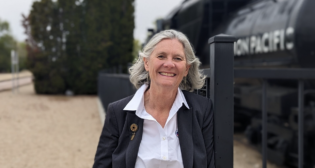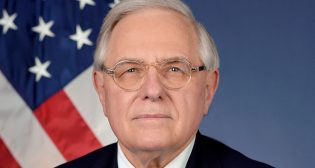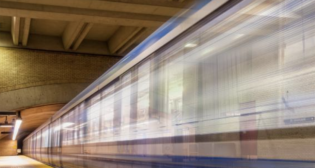
Dreamstar Lines: Back to the Future?
Written by David Peter Alan, Contributing Editor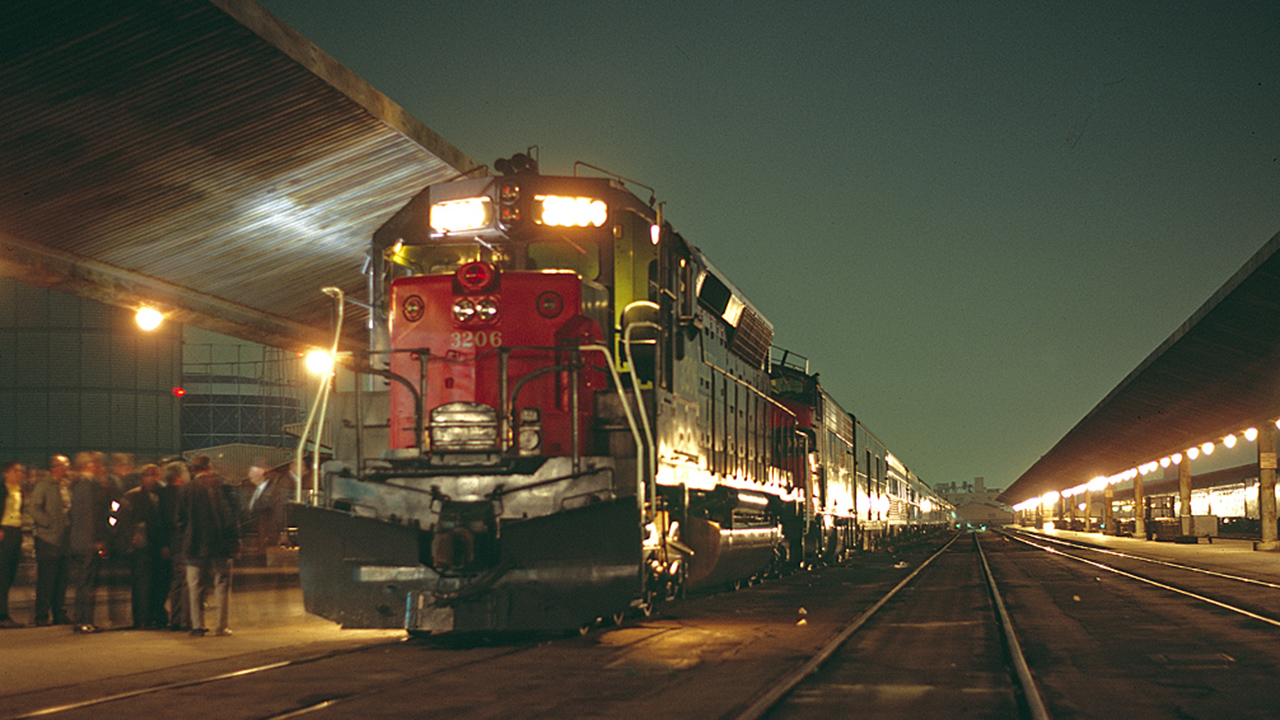
The last Train #75, SP's Lark, with SDP3206 on the point ready to leave Los Angeles, April 8, 1968. Wikimedia Commons/Drew Jacksic
During the “Golden Age of Railroading” in the middle of the past century, the Southern Pacific’s Lark was the train to take between Los Angeles and the San Francisco Bay Area, at least for folks who could afford it. The train was one of the great “streamliners” of the era, and it carried only sleeping cars; 13 of them in 1946 plus two more to Oakland on the line that now hosts Capitol Corridor trains. There was a triple-unit food service car with diner and lounge, but no coaches. Even after coaches were introduced into the train’s consist in the 1950s, the dining car served only sleeping car passengers. Running a roughly twelve-hour schedule for the entire route, the old Lark was luxury on rails. It was discontinued on April 8, 1968, more than 55 years ago.
Today, a private-sector entity wants to start a train on the same route that will give contemporary sleeping car passengers a similar experience on equipment that originally ran during that time. Dreamstar Lines, based in Newport Beach in Orange County, Calif., is the company working on putting the proposed train on the rails. The company’s website, www.dreamstarlines.com, is not long on details yet, but conveys a vision of bringing back the feel of the luxurious trains of the past. It says: “Dreamstar Lines is preparing a premium overnight ‘hotel train’ passenger train service. Board our trains in a city center or convenient suburban station … fall asleep in a private room … and wake up at your destination.” Dreamstar’s slogan is “Go to bed. Wake up there.”
The website shows pictures of the interior of an observation lounge car from a vintage train, Los Angeles Union Station, and a “streamliner” train that included an observation car and a dome car further forward, even if those cars carried the Burlington brand and not that of the SP. The site also includes the classic pitch for an overnight train geared toward professionals and other people traveling for business: “A ‘short haul’ flight is anything but—when you consider the time lost to check-in, security, and travel to and from remote airports. On a deluxe sleeper train, you spend fewer waking hours traveling than you would flying … and you don’t arrive feeling like you’ve already had a full day’s work.”
The slogan, which first appeared on the Dreamstar Lines Facebook page, evokes travel from another era, one the principals of Dreamstar are too young to have experienced in real time. Yet, their logos and artwork, which are also found on Facebook, hearken back to the era when rail travel was at its height, before the airlines, with their massive subsidies and perceived speed, took over the market.
The Dreamstar plan would bring the old SP Lark back to the rails in another way, too: It would travel between Union Station in Los Angeles and the station at Fourth and King Streets in downtown San Francisco, the station now used by Caltrain’s regional service, most of which runs to San José. The train would run with vintage cars from the “Streamliner” era of the middle of the past century, offering roomettes, bedrooms and larger staterooms, as well as a lounge area for drinks and refreshments.
Tom Eastmond and Jake Vollebregt are two lawyers from Orange County, south of Los Angeles, who have been promoting their concept of a luxury sleeper train between the City of Angels and the City by the Bay since 2017. Their law practices have often included a large amount of litigation, which requires depositions and court appearances. Those events typically begin no later than 10:00; sometimes earlier. Vollebregt, who is CEO of Dreamstar Lines, told Railway Age how he and Eastmond got the idea of reviving sleeping car service between the cities: “We were making frequent trips from Los Angeles to San Francisco for court appearances. Making the early-morning drive to catch a flight always had glitches. There was always a complication, while people want to arrive refreshed for a productive day.” He added that he and his colleagues plan to offer “a hotel on rails.” Historic trains offered that, as well.
The proposed route would require three permissions: from the Southern California Regional Rail Authority (Metrolink), Union Pacific (which absorbed the SP), and Caltrain (as well as other approvals like station use). Dreamstar is negotiating with UP and Metrolink, and plans to start talks with Caltrain later. Vollebregt said that the company is “focusing on a critical path to infrastructure and stations.” Dreamstar does not plan to run the trains directly, but to contract-out O&M (operations and maintenance).
In a way, the origins of Dreamstar Lines seem to comport with its name. The company’s Facebook posts mention efforts to raise money through such websites as indiegogo.com and gofundme.com. Now the picture appears much better, and the Dreamstar team is hoping to raise the money to start operating relatively soon. They say that their venture has a low burn rate on new capital, and they expect to obtain sufficient capitalization to obtain needed approvals and equipment and get their train onto the rails. Vollebregt told Railway Age that the venture will establish “new mobility” and will “renew rail in an entirely new paradigm.” The company’s vision also calls for similar routes elsewhere in the country.
Dreamstar Lines has no plans to carry coach passengers, at least not at the beginning. The key assumption behind the plan is that people want to sleep on the way to their early-morning destination. Vollebregt acknowledges that the company is aiming to serve a niche market, but also says that carrying only a small fraction of the people who want to travel between Dreamstar’s proposed markets would be enough to turn a profit.
Dreamstar Lines is not only ambitious about the sort of train it wants to run, but also about how soon. “We are working fast to begin service as early as late 2023 on our first route—the busy Los Angeles to San Francisco Bay Area travel corridor,” the company says on its website. But now that 2023 is almost one-third over, that prediction could turn out to be overly optimistic. Dreamstar’s proponents expect that it will take about one year to get the required approvals. Even if it takes until next year to get a physical train rolling on the route and placing passengers in beds, the progression from “dream” to reality will have been fast for Dreamstar Lines, given how long it takes most new starts to become reality.
During the first two-thirds of the past century, there were “business trains” that ran overnight schedules between many city pairs; the theory was that a business or other traveler could leave their origin in the evening, sleep the miles away, and arrive at their destination in the morning, ready for a day of work, sightseeing or other activity. Many of those trains, but not all, ran on schedules that took about eight to twelve hours from end to end. Trains that operated over longer distances, including between the East and Chicago, included dining cars and were considered the “crack streamliners” of their day (the Pennsylvania Railroad Broadway Limited and New York Central 20th Century Limited, for example). Other trains parked sleeping cars (and sometimes coaches) at origins and/or destinations to allow passengers more time to sleep, especially if they paid the higher fare to ride in sleeping cars. Such trains took riders between Chicago and destinations like Detroit and St. Louis, and between New York and places like Boston and Washington, D.C. In Canada, VIA Rail ran an overnight train between Montreal and Toronto that parked at Kingston, Ontario to lengthen the running time to eight hours. Today’s trains on the route run on daytime or evening schedules, and take slightly more than five hours.
The concept has never caught on at Amtrak. Until the late 1960s, fast trains radiated from Chicago to places like New York, New Orleans and Washington, D.C. on “business train” schedules. Today’s Amtrak schedules on those routes take too long for that purpose, but Amtrak does not run on shorter routes that could serve it, either. On the Northeast Corridor (NEC), the Night Owl (which lost that official name years ago) could serve the purpose between Boston and the Washington, and the City of New Orleans could serve it between Chicago and Memphis. Such a schedule could have worked on Trains 19 and 20 between Washington and Atlanta until recently, but Train 20 now leaves Atlanta at 11:30 p.m., almost four hours later than it did on the schedule it had run for almost half a century.
There has not been an overnight sleeper train between Los Angeles and San Francisco for more than 55 years. There was one for a brief time that stopped in the East Bay and continued to Sacramento during the early 1980s, but it lasted for less than two years. Today, two entrepreneurial lawyers and their colleagues are trying to serve a market that Amtrak has not tapped. Will they make it? As with all new business startups, time will tell, but they are hopeful, and making the effort. The best-case scenario is that their train could help give a start to a Second Golden Age of Rail Travel, including lots of sleeping cars (and coaches, too) running on convenient overnight schedules.
Maybe within the next year or two, it might be possible to start from Los Angeles Union Station or downtown San Francisco, board the Dreamstar Lines train in the evening, and move forward—into the past. Or would that be moving back—into the future?
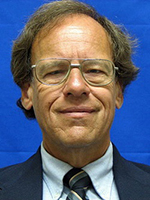
David Peter Alan is one of America’s most experienced transit users and advocates, having ridden every rail transit line in the U.S., and most Canadian systems. He has also ridden the entire Amtrak network and most of the routes on VIA Rail. His advocacy on the national scene focuses on the Rail Users’ Network (RUN), where he has been a Board member since 2005. Locally in New Jersey, he served as Chair of the Lackawanna Coalition for 21 years, and remains a member. He is also Chair of NJ Transit’s Senior Citizens and Disabled Residents Transportation Advisory Committee (SCDRTAC). When not writing or traveling, he practices law in the fields of Intellectual Property (Patents, Trademarks and Copyright) and business law. The opinions expressed here are his own.
